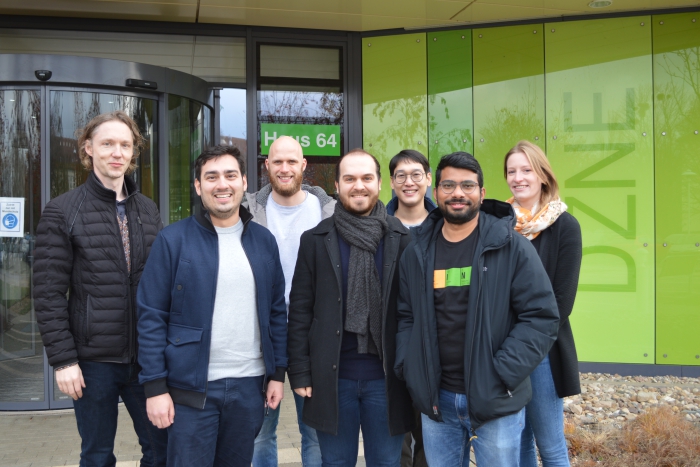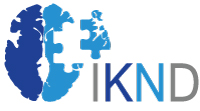AG Dr. Gabriel Ziegler: Modelling & Neuroprognosis in Ageing and Dementia

Description of the working group
Ageing and neurodegeneration unfolds over time and manifests in age- and disease- related trajectories of the brain and behavioural symptoms. In order to improve our understanding of the complex interactions occurring at different observational levels (structural/functional/ molecular/behavioural), it is of vital importance to integrate more person-specific data and analyse underlying (multivariate) changes on the level of individuals rather than only groups. This trend is reflected in an increased global availability of large longitudinal neuroimaging cohorts such as ADNI, UK-Biobank, and DZNE-DELCODE. However, there is still a lack of efficient methods for statistical analysis of neuroimaging data and prediction of individual brain-behavioural changes during aging and pathology. Our research goal is to develop methods and support state of the art analyses of brain changes and enable symptom predictions using neuroimaging data.
1. Methods for analysis of change in ageing and neurodegeneration
The common frameworks for neuroimaging analysis (SPM/FSL/freesurfer/R) often require substantial statistical expertise when faced with the question how to analyse longitudinal or multimodal MRI data. Applied researchers questions vary considerably from testing specific ageing effects (Ziegler et al. 2017, NeuroImage) to more exploratory analysis typically seen in longitudinal multimodal imaging using multi-parametric data (such as Ziegler*/Hauser* et al., Nat Neuro, 2019). When implementing the statistical analysis of change in those frameworks, we often need to consider existence/lack of clinical hypothesises, design types, balanced or non-balanced design factors, power and missingness, sample heterogeneity, individual covariates and acquisition-related confounds such as multi-centric effects. Moreover, inference about structural and functional brain changes in ageing and disease might be of interest on different levels, such as (a) global (b) regional (c) voxel-based and (d) pattern-based levels and is often motivated by a brain-behavioural perspective.
The goal of our working group is to establish statistical expertise for sophisticated modelling and analysis of brain changes in ageing and neurodegeneration. This involves exploiting the advantages of various statistical frameworks (SPM/FSL/freesurfer) including specialized toolboxes (SWE, MRM, Pronto, hMRI, tensorflow, scikit-learn, STAN), dynamical and mixed-effects models (see illustration) and creating novel targeted solutions for for pattern-based analysis or dynamical modelling. Our previous methodological developments (Ziegler et al., 2012a, 2012b, 2013, 2014, 2015a, 2015b, 2017, 2018, 2019) and workflows can be applied to promising collaboration projects on ageing and neurodegenerative disorders.

2. Neuroprognosis using machine learning and longitudinal MRI
The increased availability of larger cohort data is reflecting a noticeable trend in cognitive and brain sciences from traditional experimental studies towards a more data-oriented science. Neuroimaging markers often provide better predictions (neuroprognosis), alone or in combination with other measures, than traditional behavioral measures (Gabrieli et al., 2015). Ultimately, even combining information from different sources (MRI modalities, blood & csf biomarkers, neuropsychology & mobile apps) might enable learning highly accurate pattern-based decoding models for individual predictions (Davatzikos et al., 2019). Those multivariate approaches are particularly promising for translational applications such as early diagnosis and subsequent prognosis of neurodegenerative disorders such as Alzheimer’s disease (AD).
With further advances in statistical methodology, neuromarkers may offer opportunities to personalize clinical practices that lead to better outcomes for patients at risk. Over the last 2 decades, many new technologies for modelling imaging signatures of neurodegenerative diseases have been developed and provide opportunities for individualized diagnosis and prognosis (Rathore et al., 2017, Davatzikos et al., 2019, Mateos-Pérez et al., 2018). For classification and regression, in addition to traditional kernel-based methods (Shawe-Taylor, 2004), Gaussian processes (Rasmussen and Williams, 2006), multi-kernel approaches (Pettersson-Yeo et al., 2014, Aksman et al. , 2019), and deep neural networks (DNN) (Fisher et al., 2018, Jo et al., 2019) are increasingly applied in neuroimaging and cognitive neuroscience. However, previously established kernel-based methods do show a comparable performance when compared with recent DNNs in a wide range of behavioral and demographic prediction tasks (He et al., 2020).

Generally, there is a compelling argument towards a Bayesian treatment of uncertainties of predictions, especially in clinical and translational applications (Ghahramani et al., 2015, Filippone et al., 2012). Within this research branch we aim to apply previously developed predictive modelling techniques (Franke, et al., 2010, Ziegler et al., 2014 & 2015) using Bayesian nonparametric approaches with Gaussian Processes and multi-kernel learning approaches (Marquand et al., 2014) to DZNE cohort data from clinical and population science. In collaboration with DZNE’s clinical and domain experts the machine learning applications will be focussed on prediction of clinically highly relevant metrics such as individual biomarker status (for AD) or biologically defined disease states for other disorders.
An important achievement will be the extension of the cross-sectional frameworks to larger cohort data which additionally includes longitudinal follow-up data for neuroprognosis (e.g. DZNE DELCODE cohort). Although learning predictive models using longitudinal data is very promising for individual level prognosis (Davatzikos et al., 2019) this aspect is still largely neglected in the field.
3. Phenotyping of brain maintenance in ageing and Alzheimer's disease
Improvements in cognition during ageing require maintenance of neural resources. In this branch we develop new indices of brain maintenance based on task-related functional Magnetic Resonance Imaging (fMRI) using the DZNE Longitudinal Cognitive Impairment and Dementia Study (DELCODE). We take advantage of established kernel-based methods in machine learning (and AI) to define brain maintenance as a high similarity of functional activity patterns when compared to a young reference cohort. This approach is often referred to as ‘normative modelling’ (Ziegler et al. 2014, Marquand et al., 2016). The proposed indices are multivariate and therefore do not rely on isolated a-priori brain regions but characterize individuals on the level of distributed whole-brain activity in memory-related fMRI tasks. In this stream of research we also aim to validate and compare functional based indices against structural MRI-based alternatives, and exploring the general potential of normative models against discriminative modelling approaches.

Ongoing projects of the group:
- Testing the ATN biomarker classification system using brain morphometry
- Supervised Learning for biomarker and memory prediction using multi-modal imaging data
- Unsupervised learning using memory driven computing of multi-modal imaging data
- Assessing the role of vascular risk factors in ageing and dementia
- Exploring multivariate metrics to benchmark functional brain maintenance
- Brain-behavioral modelling using computational modelling and microstructural MRI
- Dynamic modelling of microstructural changes during training induced brain plasticity








